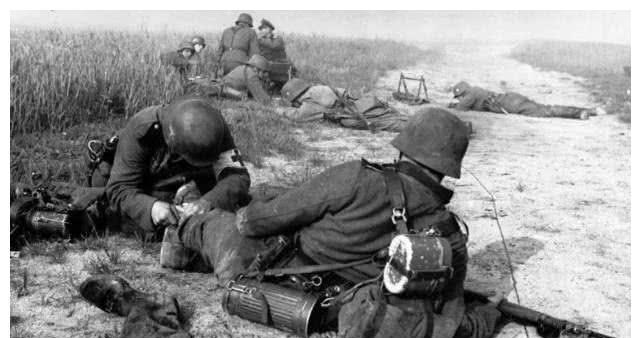In the anti-Japanese spy war drama, we can often see the figure of the Western medicine "penicillin". For example, Liu Xiaofeng's "Penicillin 1944" is around the two boxes of penicillin of the Japanese army. In order to seize these two boxes of medicines, the guerrillas fought with the Japanese agents, and at the cost of many arrests and sacrifices, they finally succeeded in recapturing two boxes of penicillin and sending them to the rear troops of our army. So, how precious was the two boxes of Western medicine "penicillin" that were exchanged for such a big move and paid a heavy price?
"Penicillin" is the English translation of the antibiotic drug penicillin. The name "penicillin" is the Chinese name given by the Chinese biologist Fan Qingsheng according to its characteristics. Penicillin, in its current view, is only a very common medicine, and has even been replaced by cephalosporin drugs. However, at the beginning of the invention of the World War II period, as a special drug for the treatment of bacterial infections, it was the only life-saving medicine for the wounded on the battlefield.

(Treating the wounded in World War II)
Before the invention of antibiotics, although there were no birth control measures for human beings, the growth of human numbers was still very slow. This is because humans face almost nothing to do in the face of bacterial and viral infections, so the mortality rate is extremely high.
This, coupled with the constant wars waged by greedy rulers, wounded a large number of soldiers on the battlefield. Eventually, most soldiers died from diseases such as sepsis and tetanus caused by bacterial infections.
This turned around in 1928, when Alexander Fleming, a British bacteriologist, began to challenge bacteria. In a lucky test error, penicillin with a bactericidal effect was discovered.
However, it was not until 1941 that the purification technology of penicillin was greatly improved and mass production began. Britain and the United States were at war with Nazi Germany. This new drug is very effective in controlling wound infections.
In October 1943, Flory and the U.S. military formally signed a penicillin supply agreement. This specific drug, named "penicillin" by molecular formula, was born at the end of World War II. The death rate of allied wounded fell dramatically. The balance of victory quickly tilted in favor of the Allies.
In the Pacific War, Japan's rapid rout was directly related to the absence of penicillin. In the tropical rainforest, mosquitoes are rampant, malaria after being bitten by mosquitoes, and the trauma after locust blood sucking, the United States only needs a needle of penicillin to restore health. The Japanese, on the other hand, could only wait for death. In the Battle of Guadalcanal, the Japanese army died more than 20,000 people, and the American army only killed more than 1,000 people.
By 1944, penicillin was produced enough to treat all the Allied soldiers who fought in World War II.
There was once a World War II poster that read: Thank you penicillin, wounded soldiers can go home alive. It can be seen that the wounded on the battlefield are grateful for it.
At that time, British Prime Minister Winston Churchill also said that penicillin was the greatest invention of mankind during World War II. It is the most important life-saving medicine and strategic material on the battlefield, and its value is higher than gold. Fleming, Flory and Chan, three scientists who made special contributions to this great invention, were also jointly awarded the Nobel Prize in Physiology or Medicine in 1945.
in Fleming
At that time, thanks to the support of the United States for China's war of resistance, we could still get some penicillin. However, due to the blockade of Japanese imperialism and the fact that the drug is a military-controlled drug, it is difficult to find on the market and can only be traded on the black market.
Penicillin at that time, for the poor, almost did not dare to ask for luxury. Even for wealthy families, in a good supply, each penicillin cost four oceans; in wartime, when supplies were scarce, a gold bar could be exchanged for a penicillin.
Therefore, some merchants will use underground transactions to obtain penicillin, just like today's speculators, and make a lot of money after taking turns to fry. Coupled with inflation during the war and the astonishing rate of currency depreciation, in the eyes of some capitalists, only gold and penicillin are the real preservation of value. From here, you can also see how precious it is.
In order to reduce dependence on American penicillin, the national government at that time established the Central Epidemic Prevention Office. The person in charge is Tang Feifan, who returned from studying in the United States, and he is the first biologist in China to devote himself to viral bacteriological research.
At the end of 1944, Tang Feifan and Fan Qingsheng led the Central Epidemic Prevention Department to successfully develop penicillin under extremely simple and difficult conditions. However, due to the lack of necessary equipment, mass production is still not possible.
(Tang Feifan)
After the victory of the Anti-Japanese War, the Central Epidemic Prevention Office was relocated back to Beiping, and on the original site destroyed by the Japanese army, the Central Epidemic Prevention Experimental Office of nearly 10,000 square meters was built from scratch. With the venue, Tang Feifan put the localization of penicillin on the agenda. He used a set of penicillin experimental production equipment donated by the American Pharmaceutical Aid China Foundation to produce and import 200,000 units of penicillin-equivalent products.
Some people once described the atomic bomb, radar, and penicillin as the three most far-reaching and greatest inventions on mankind in World War II. Among them, the atomic bomb can kill people and destroy everything; radar provides anti-aircraft early warning and can save lives; and penicillin can save human lives. From this point of view, penicillin is undoubtedly more meaningful.
(References: Penicillin, Tang Feifan)